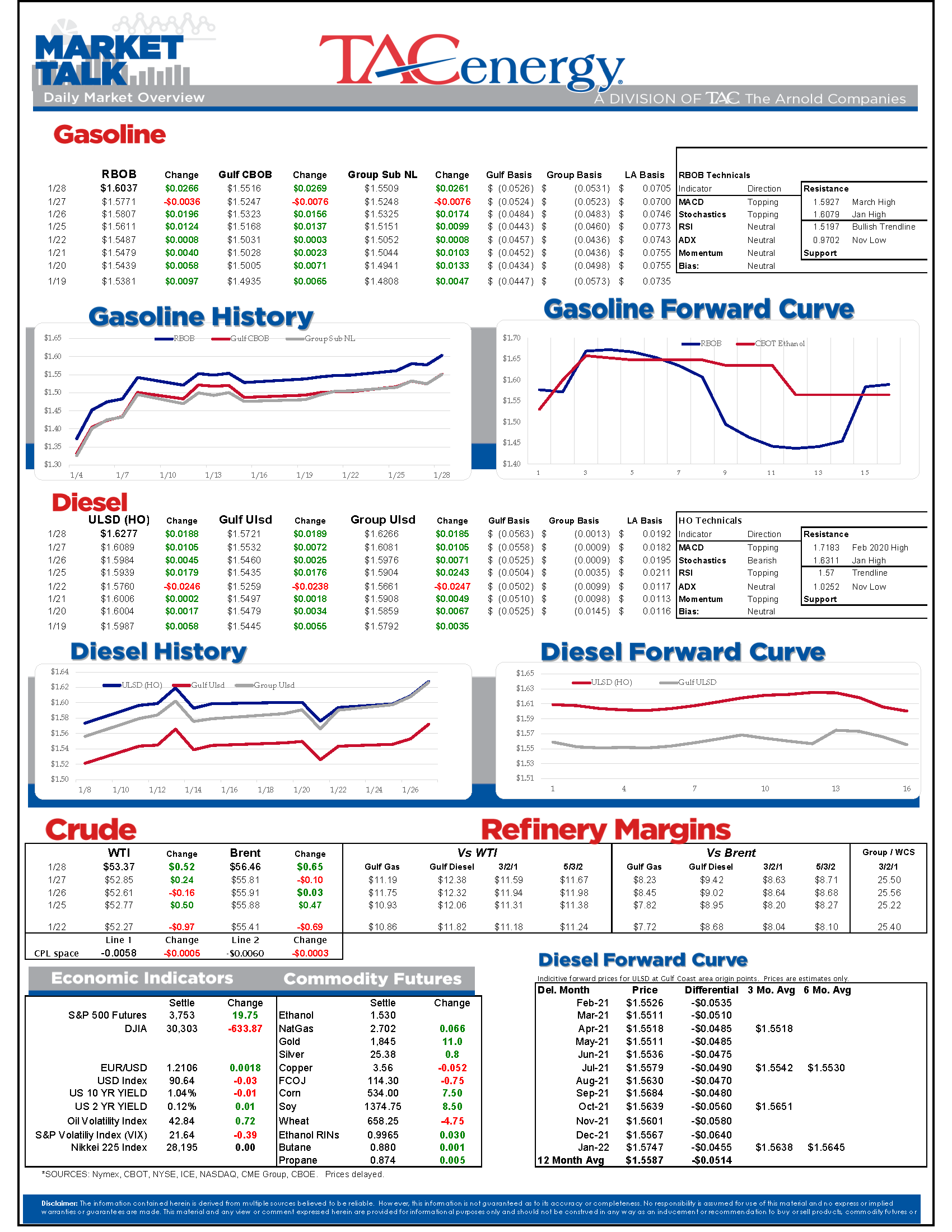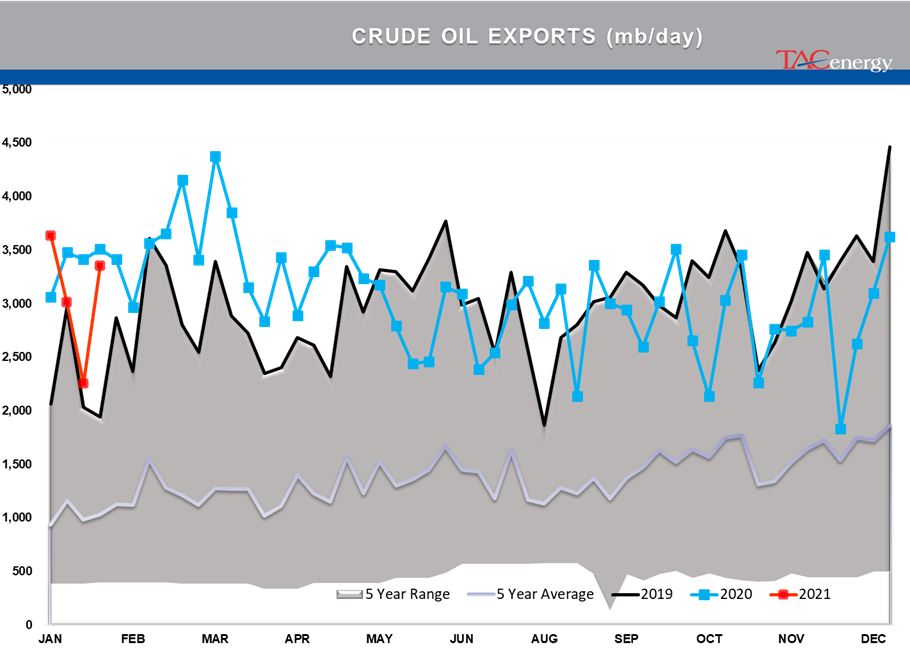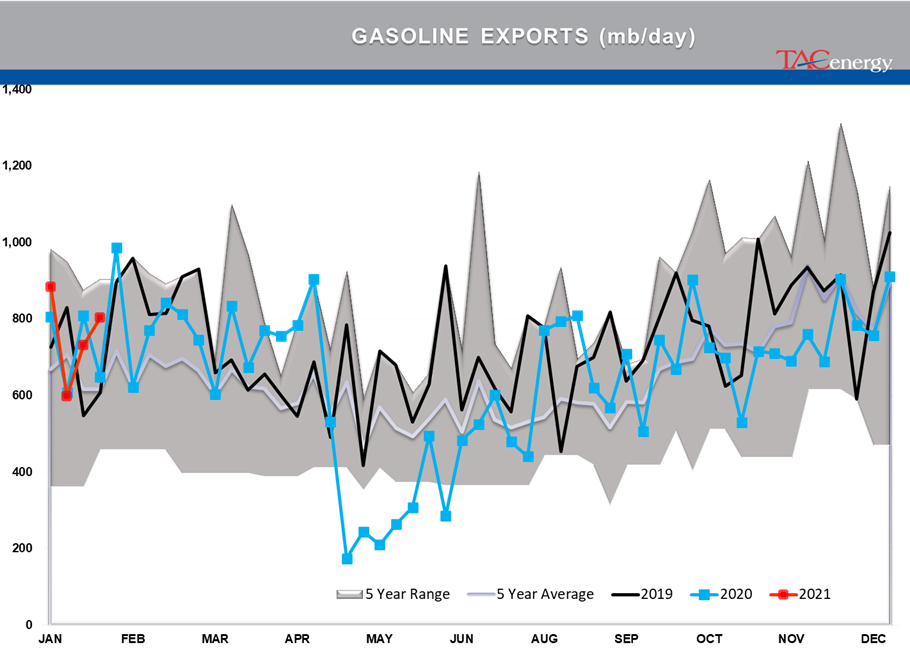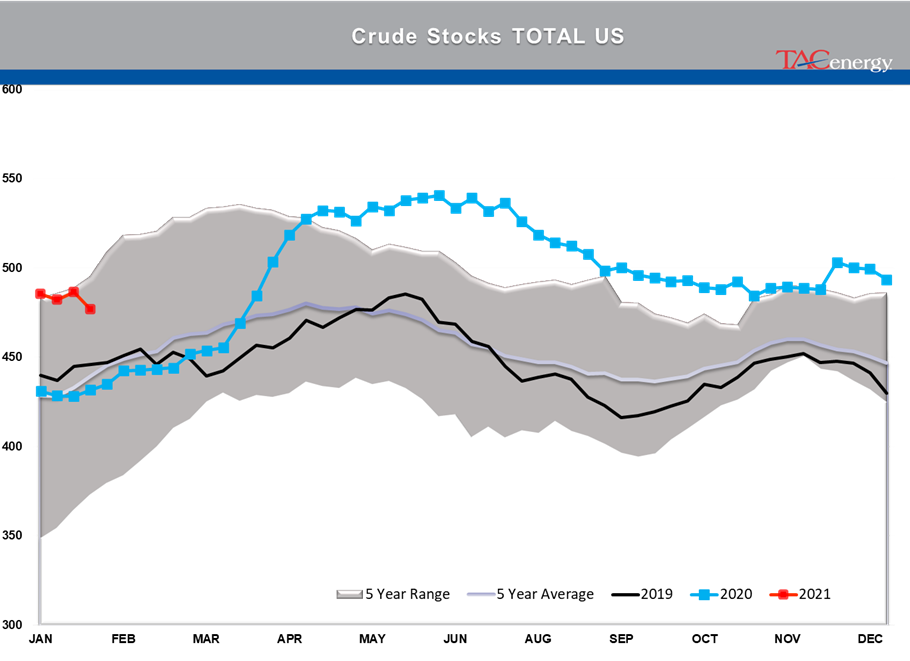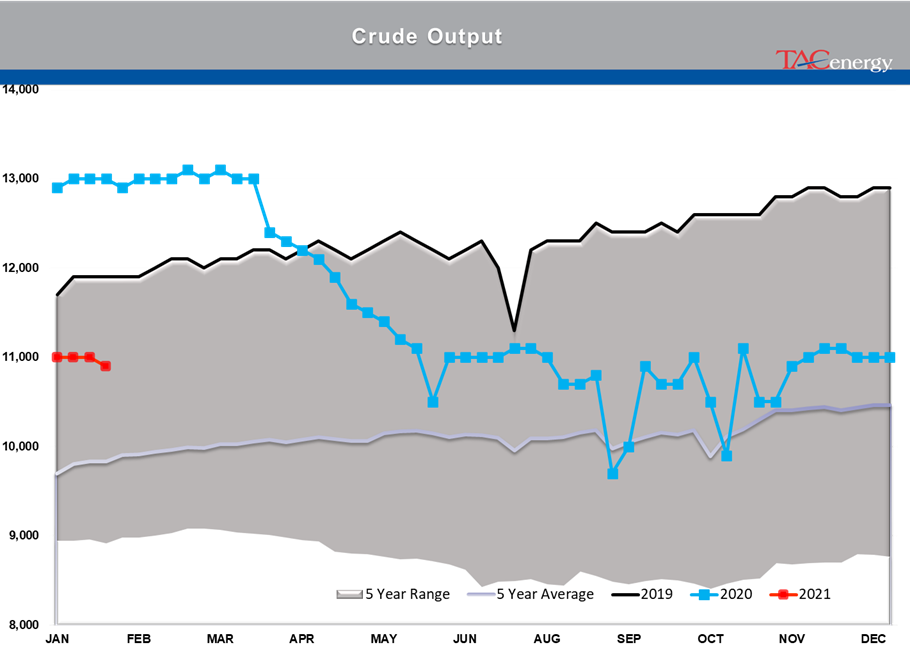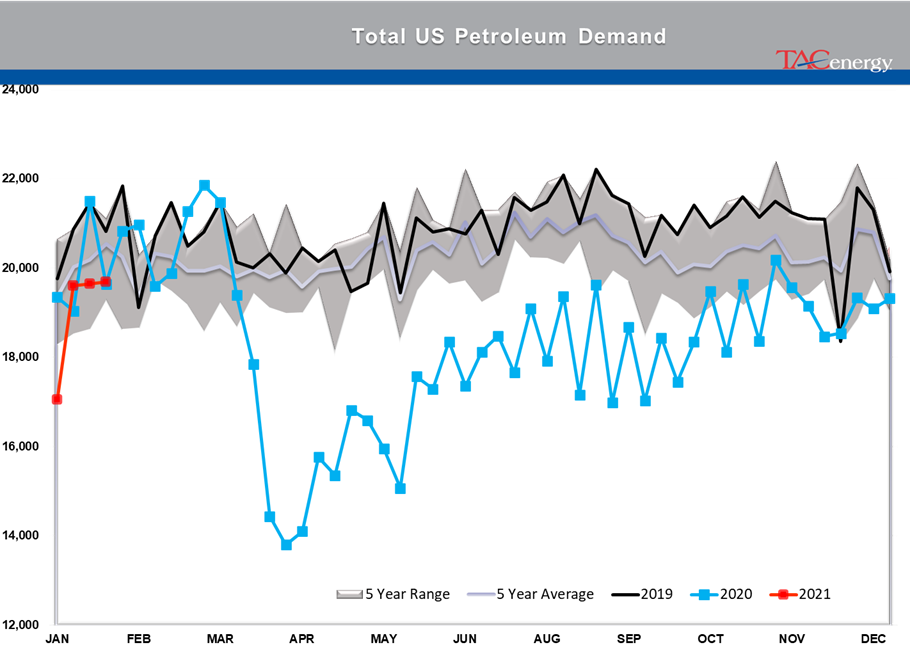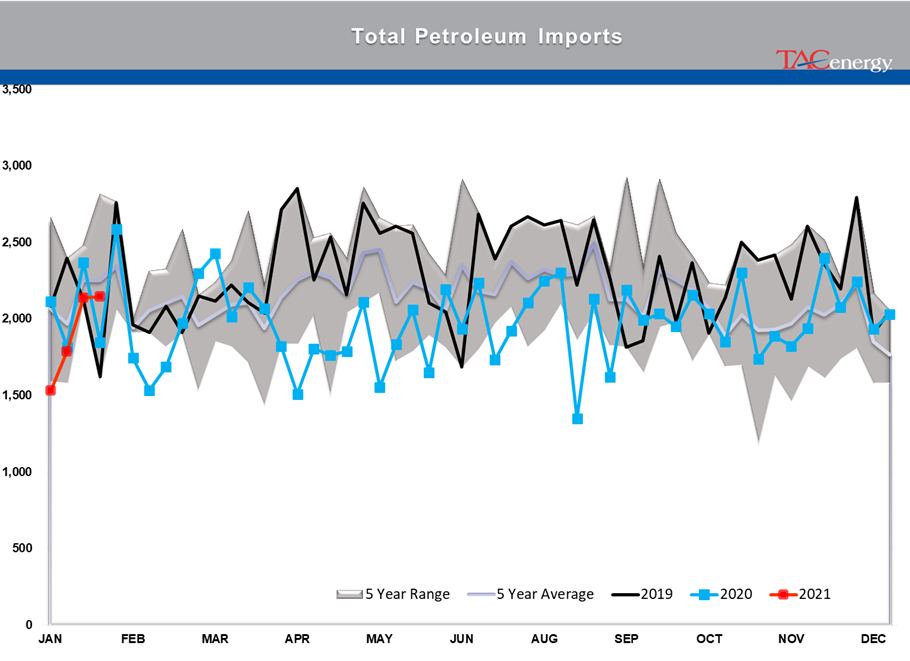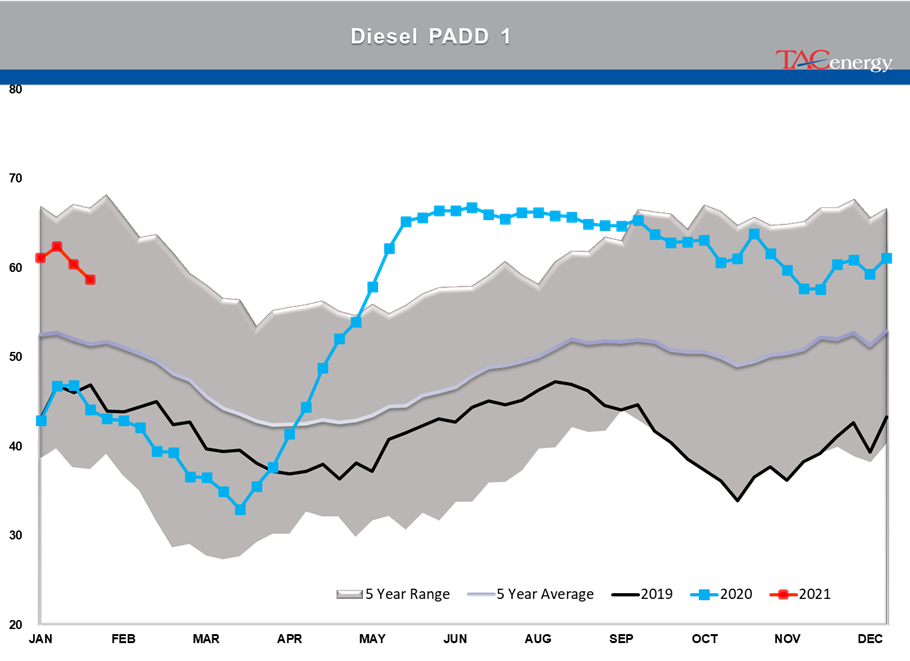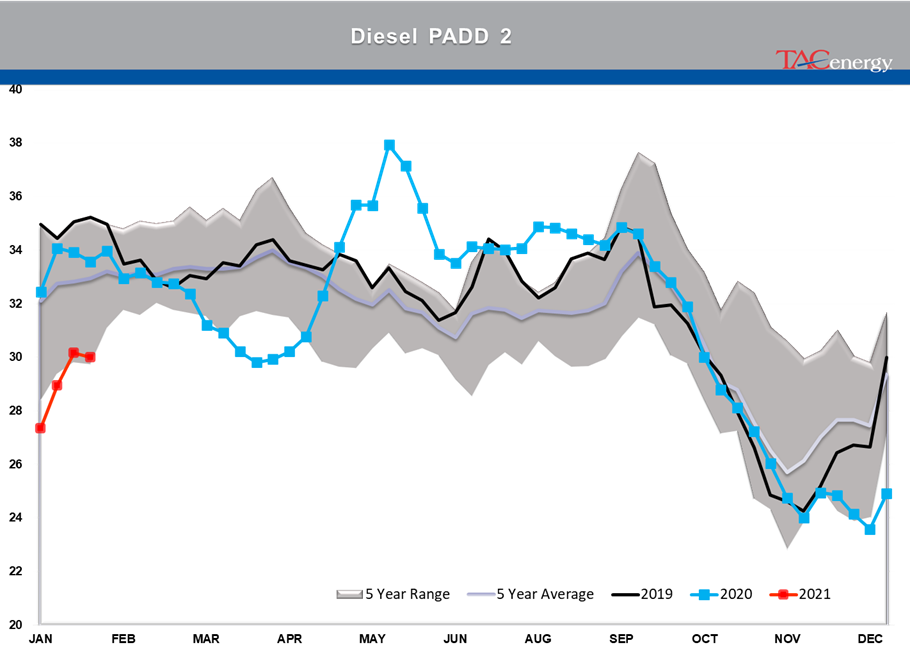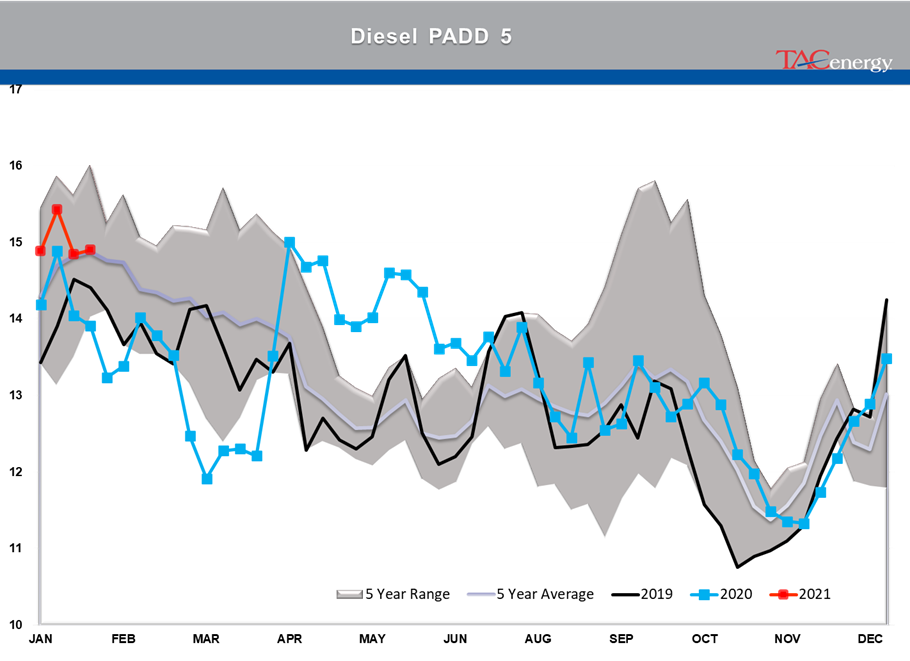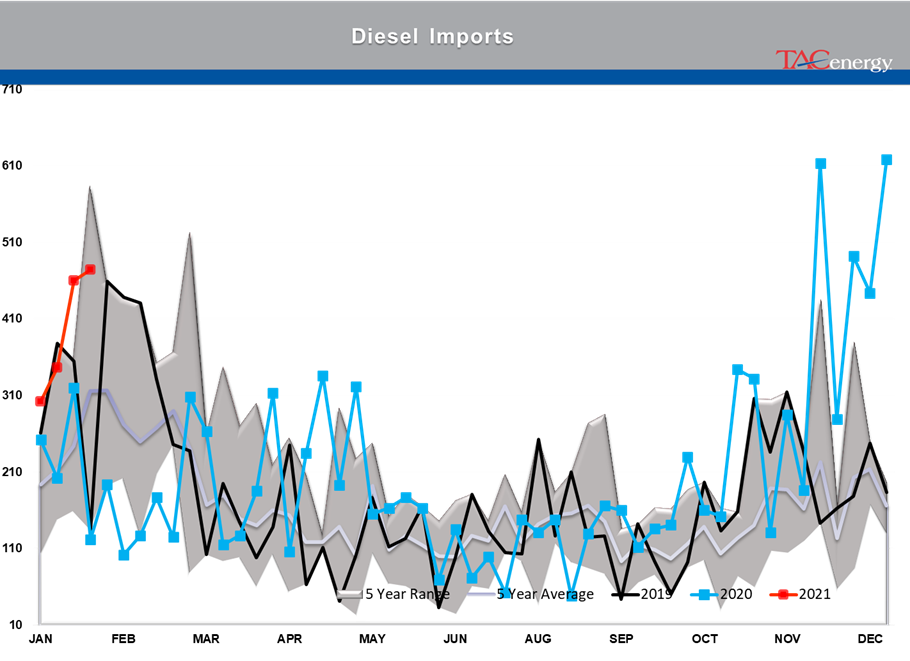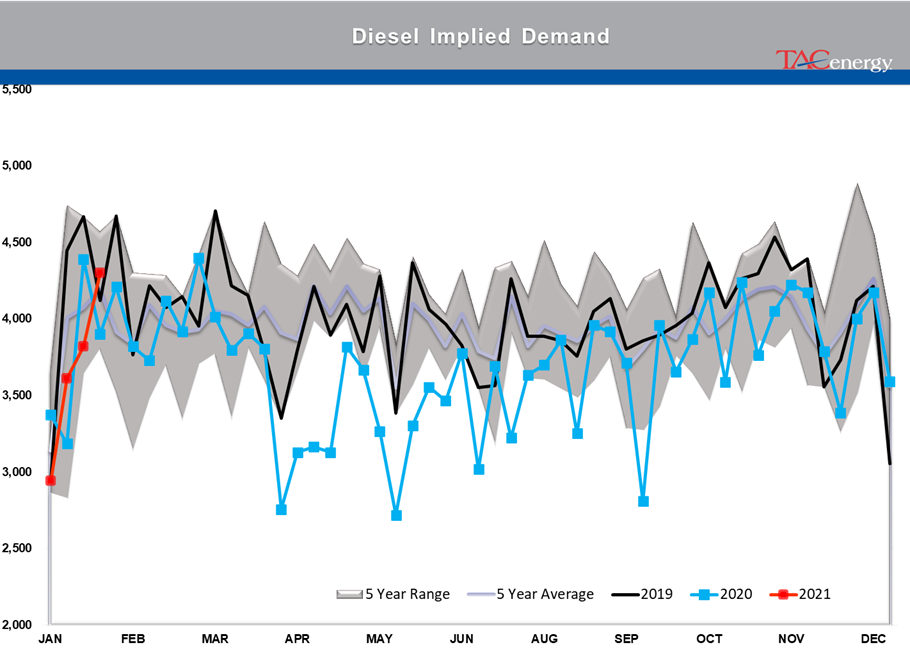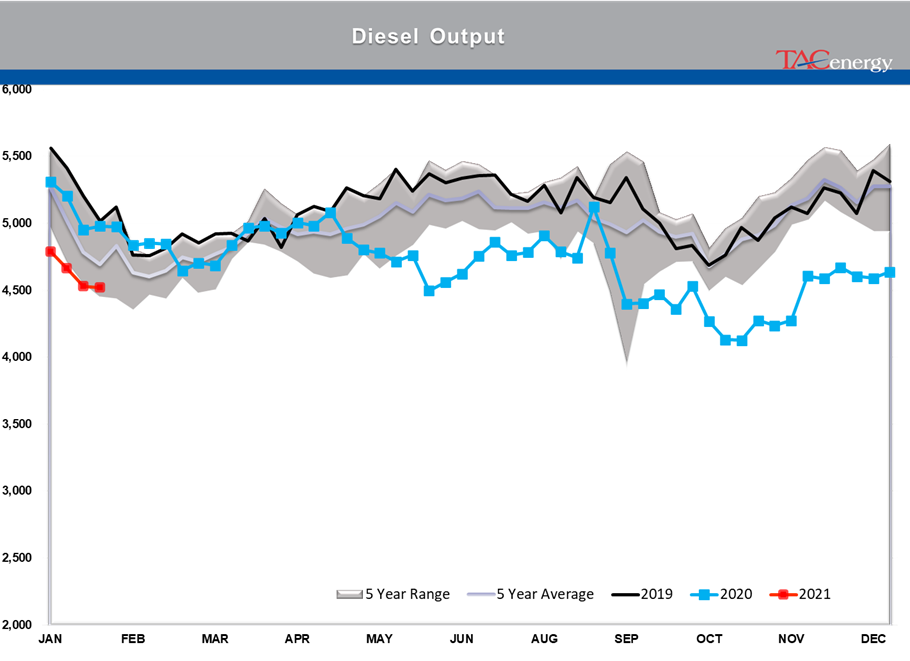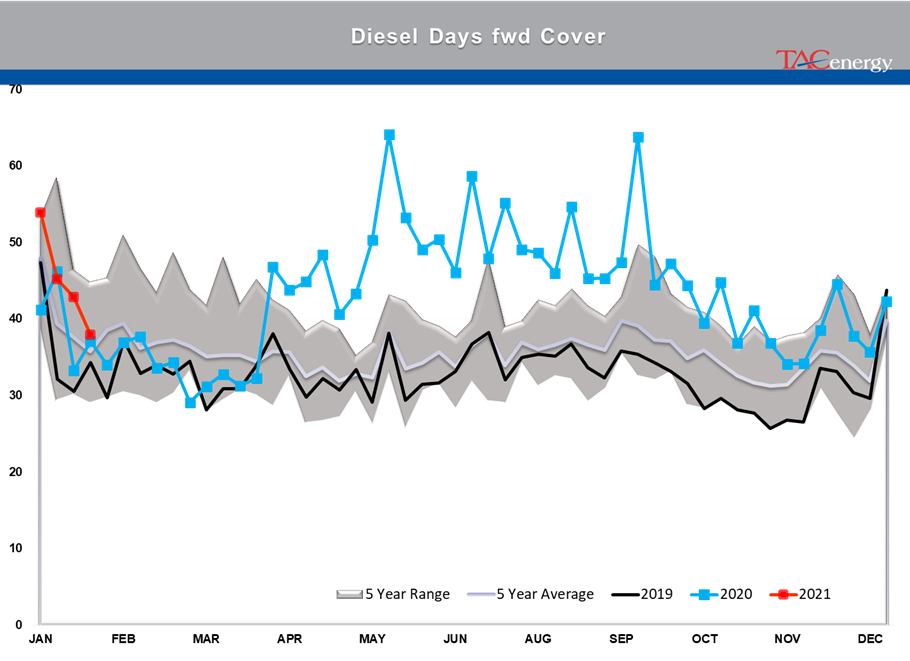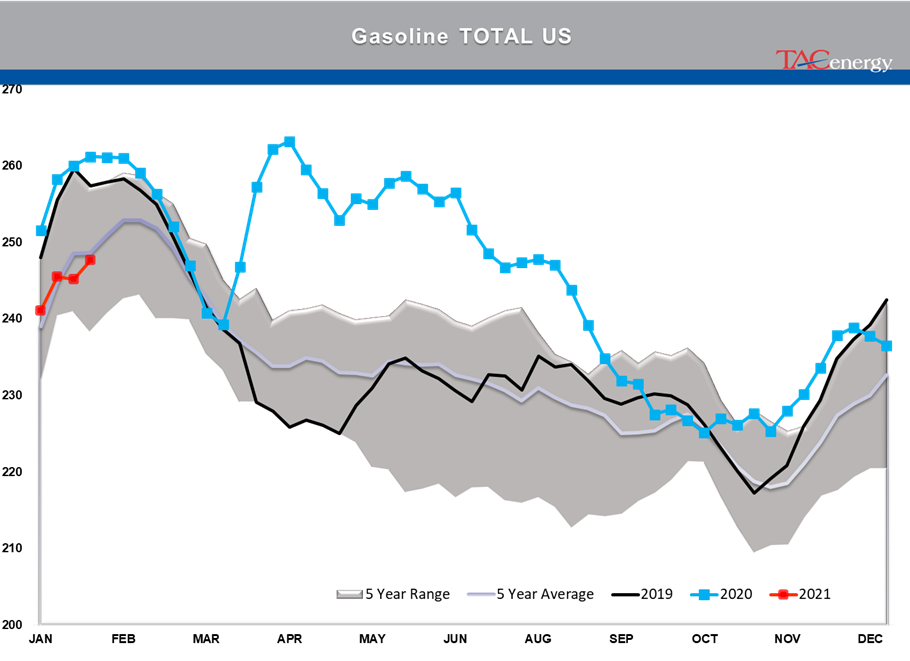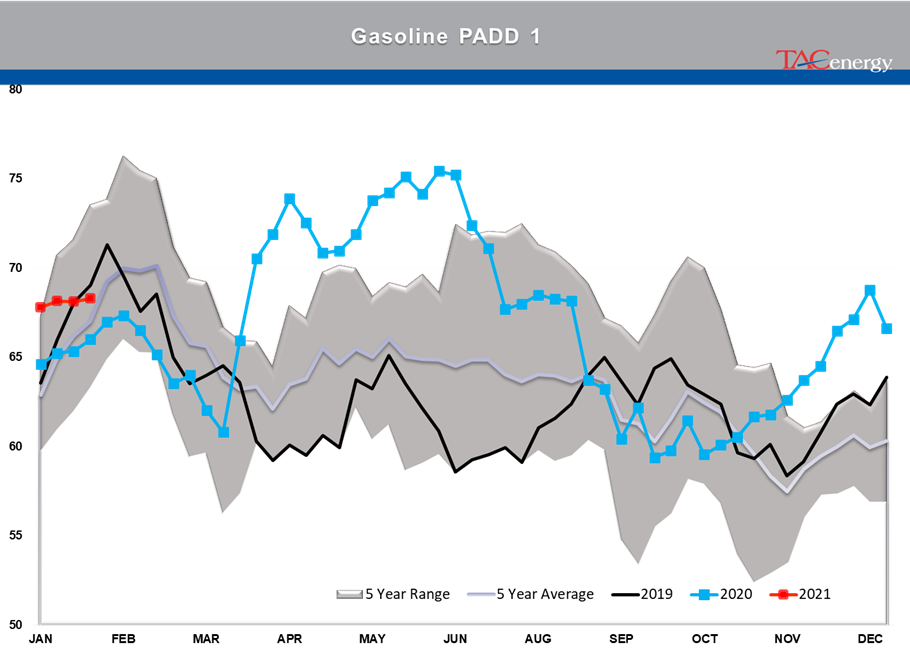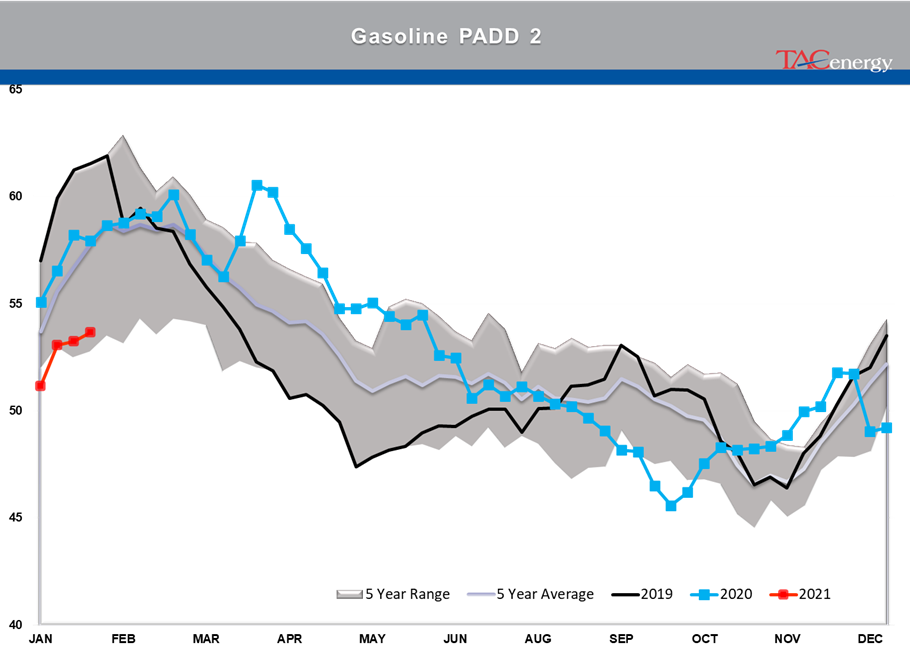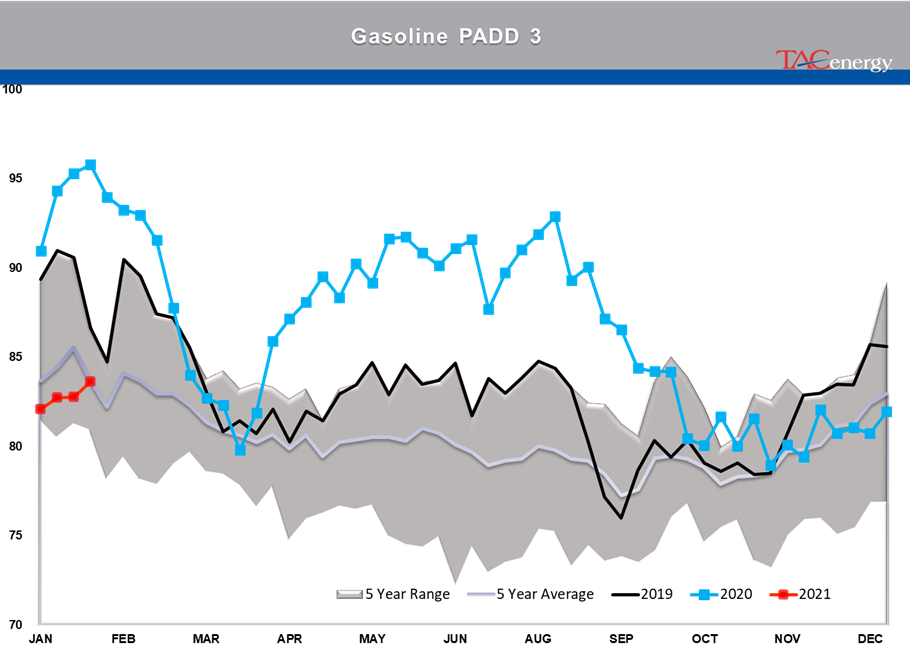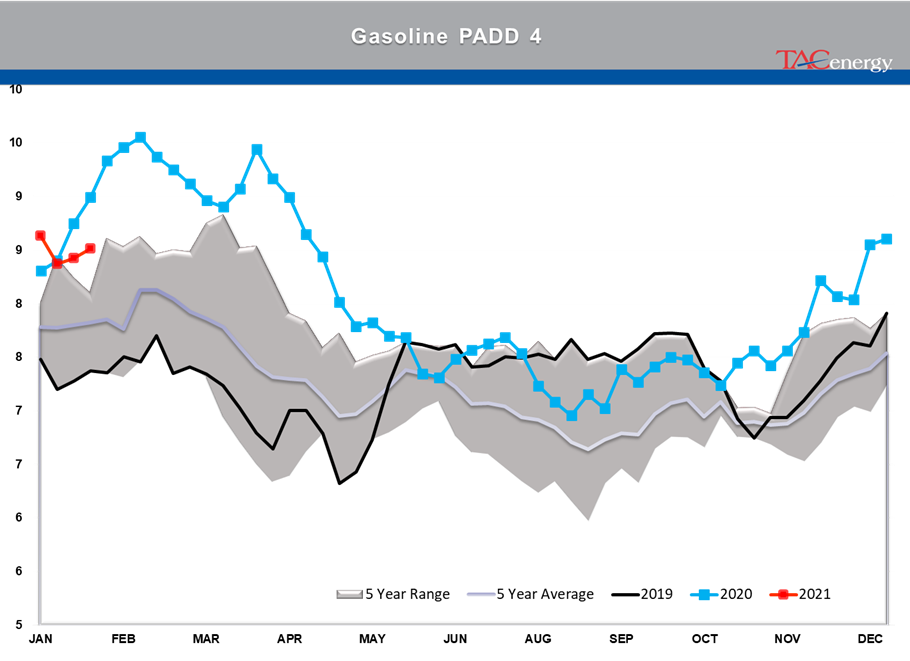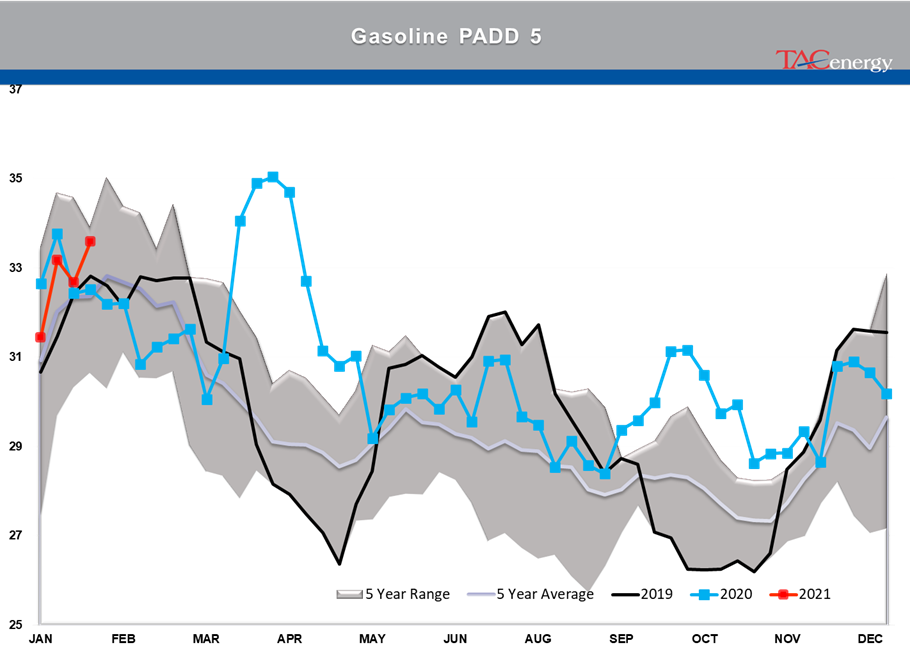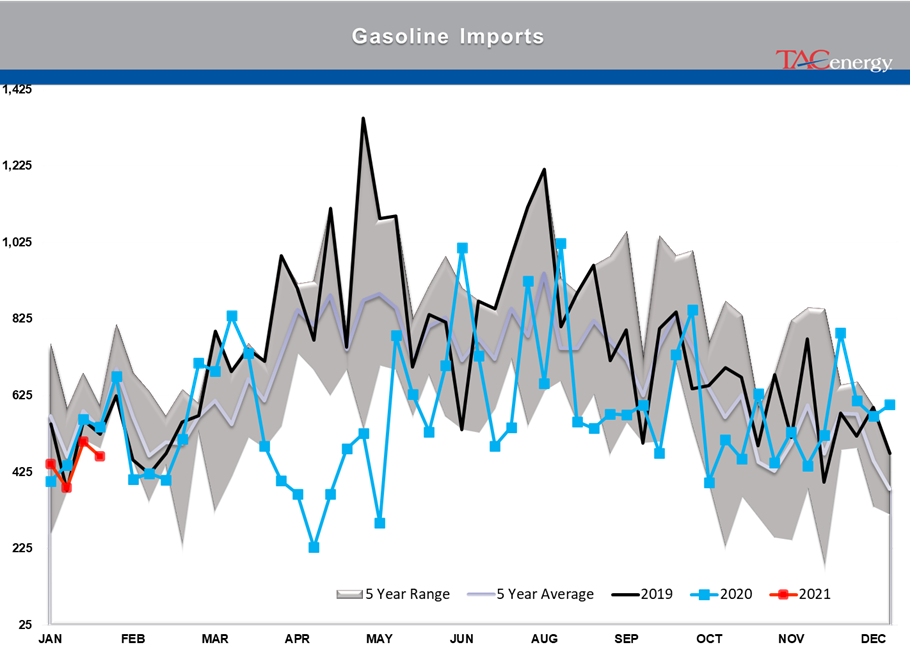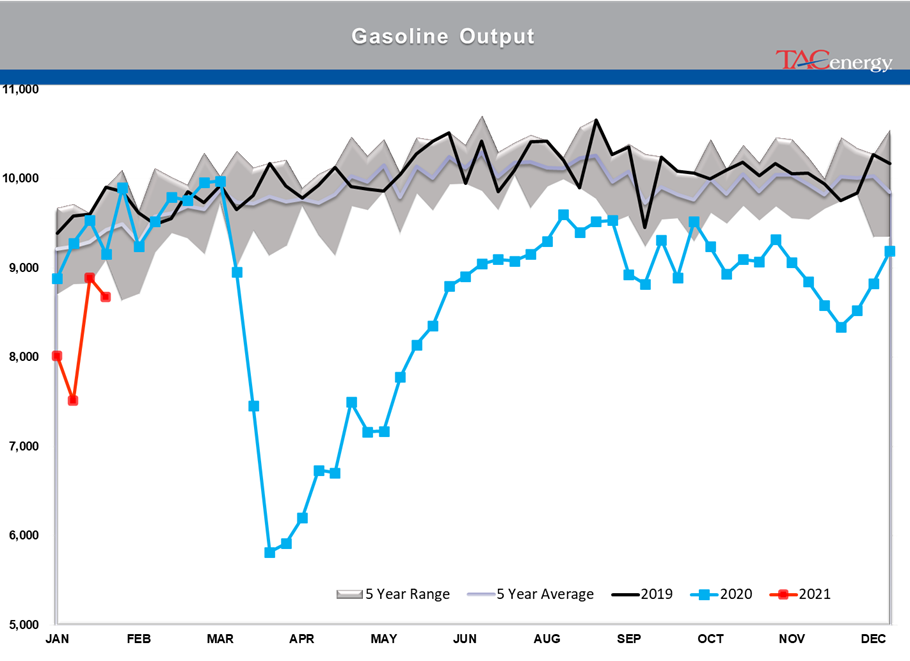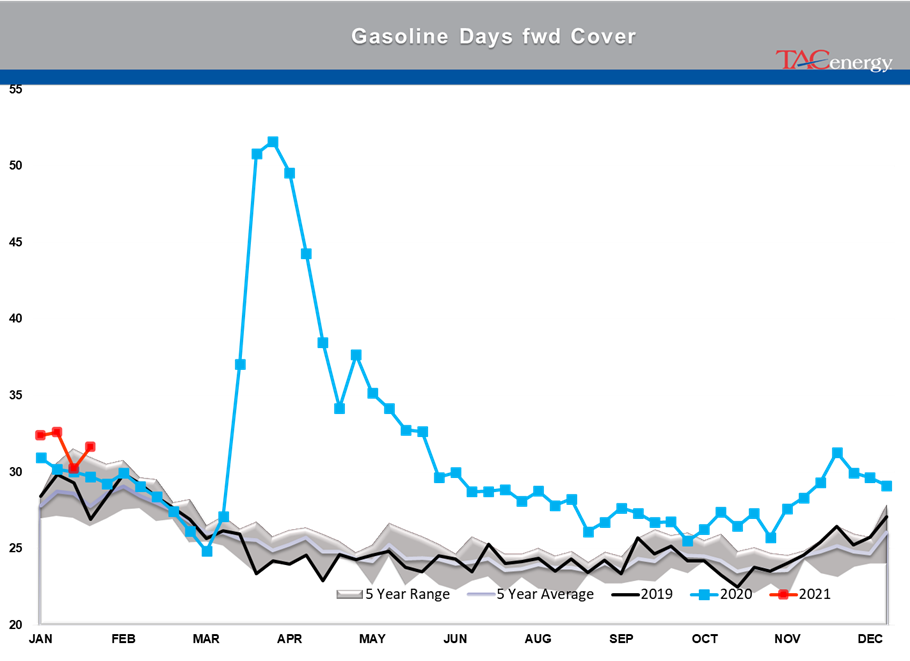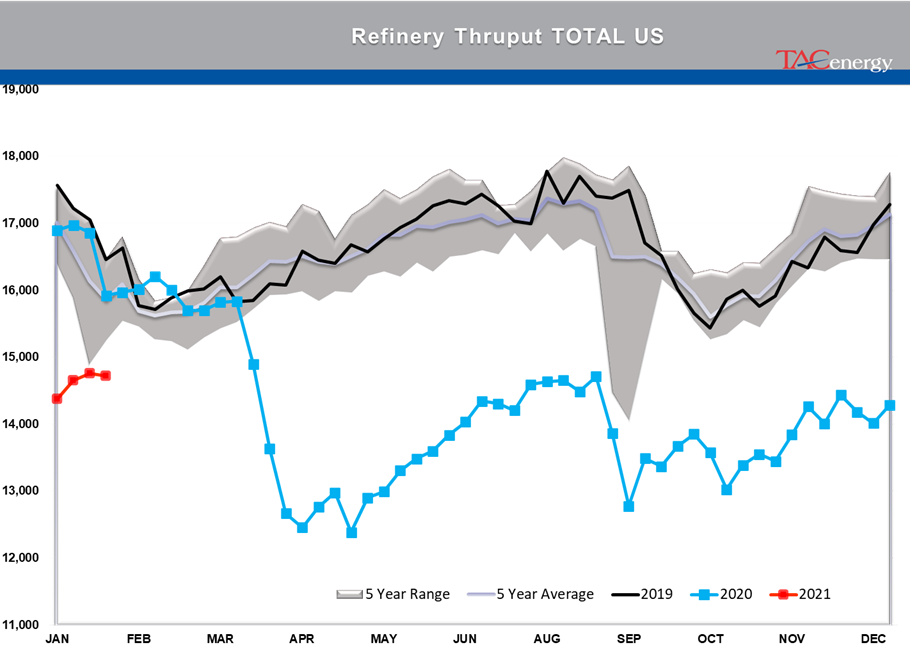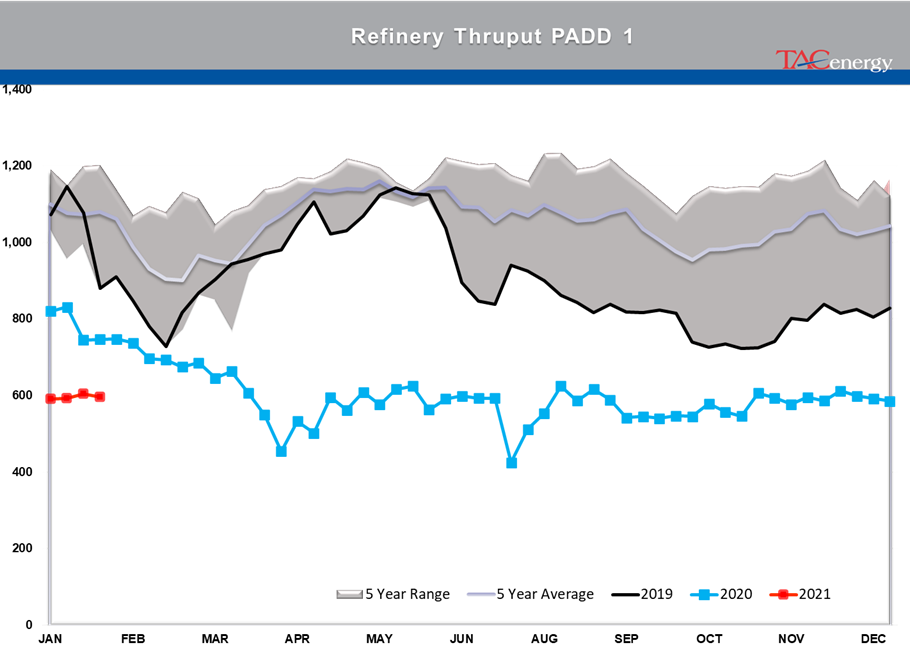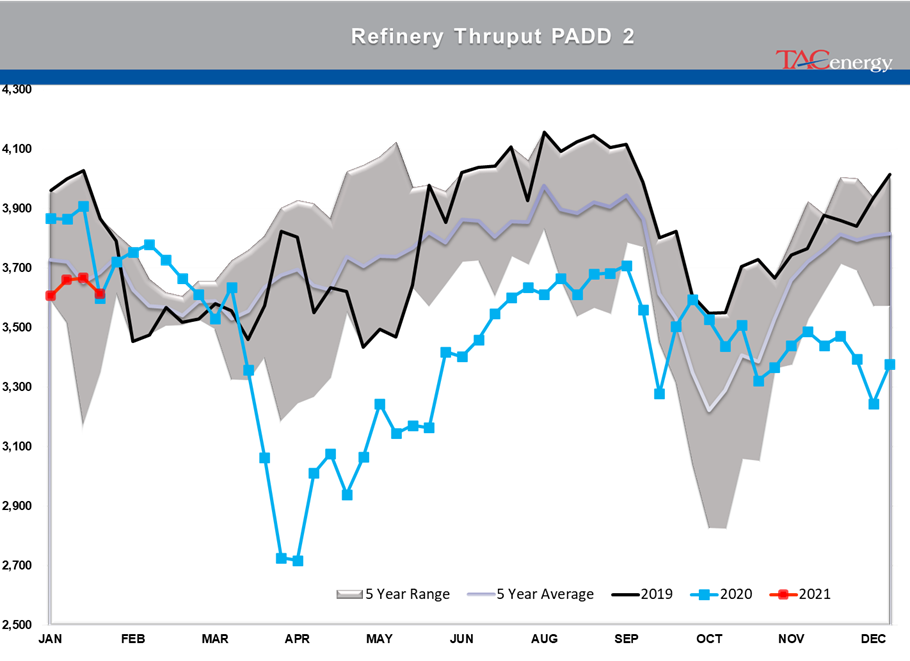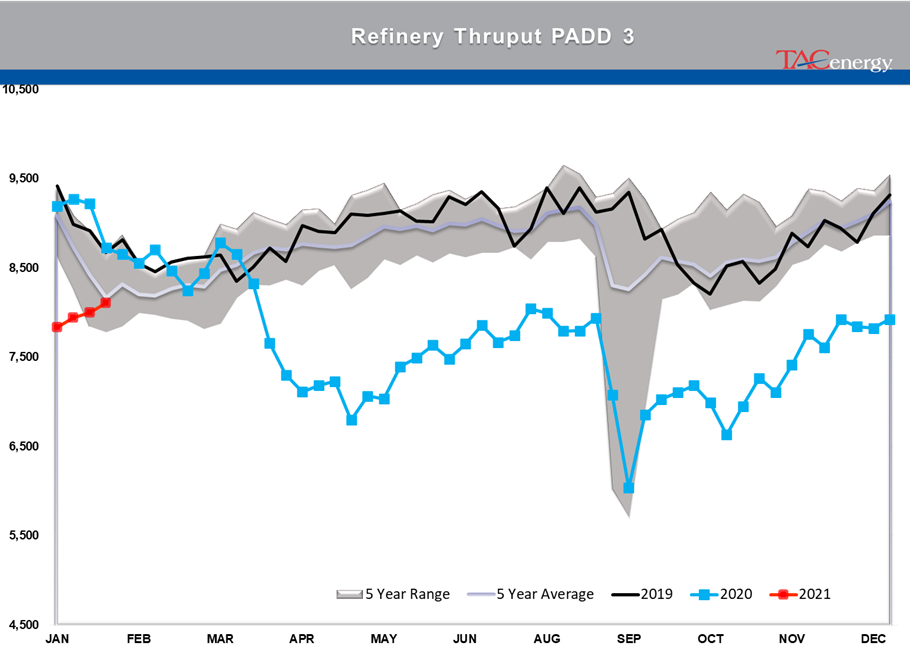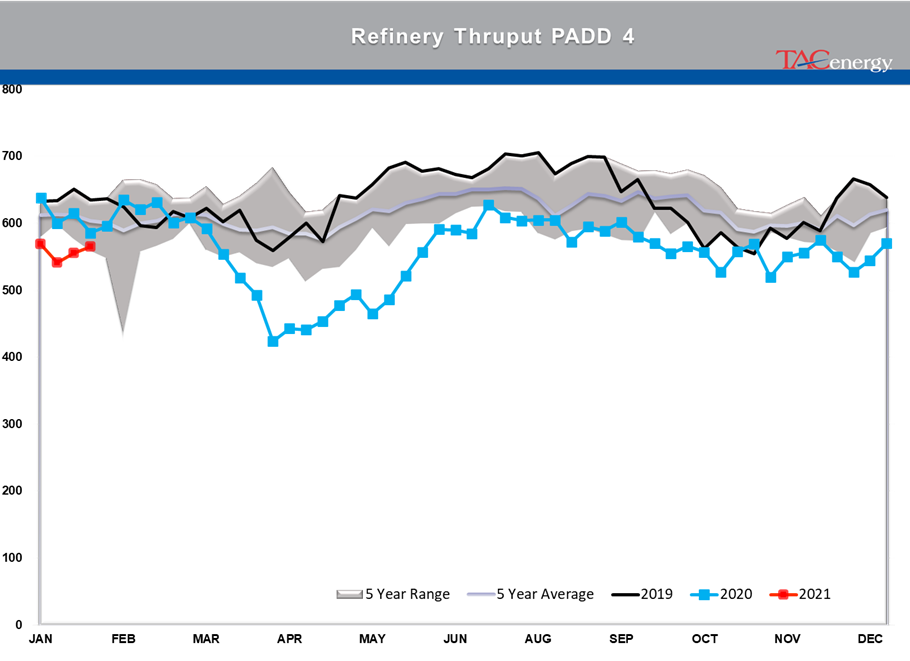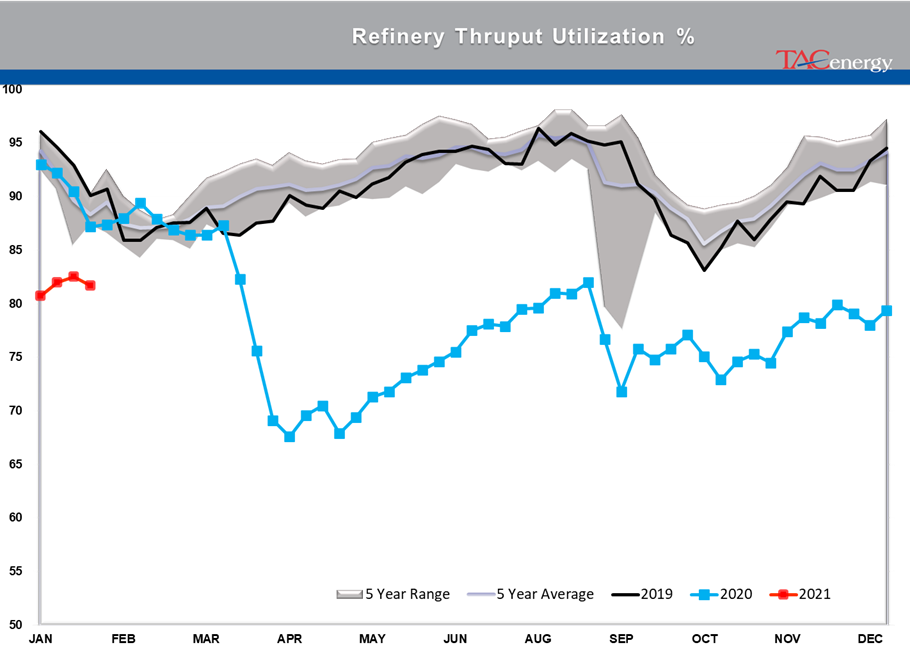Chaotic Trading Grips Pockets Of U.S. Equity Markets

Gasoline futures just broke above $1.60 for the first time since you first heard about COVID-19, after Reddit users decided to band together and punish those shorting the RBOB market. That’s not really why it happened. It just seemed fitting giving the headlines of the day. In reality, the chaotic trading that’s gripped pockets of U.S. equity markets this week hasn’t seemed to spill over into energy markets yet, which have been relatively quiet over the past few weeks during the steady climb higher.
After a slow overnight session there has been a bit of excitement just before 8 a.m. central, as refined products have rallied 2-3 cents off of small overnight losses, pushing which seems to be following a bounce in equities after the Q4 GPD estimate and initial jobless claims were released. If you’re wondering why equity and commodity markets might rally after a weaker than expected read on the economy, remember we’re back in the days of bad news can be good news as it will encourage more fiscal and monetary stimulus that props up prices.
RIN values continue to lend support to gasoline and diesel prices, as their steady march higher continued Wednesday. No word yet on if any hedge funds had been shorting RINs before this move, but as long as that rally continues it will put more pressure on refiners that don’t have their own blending capabilities. That seems to be a contributing factor for refined products setting new 11 month highs this morning while crude oil prices are still lingering just below technical resistance.
The DOE’s weekly status report showed the largest draw down in crude oil inventories in six months, which helped the entire complex wipe out the modest losses it had seen earlier Wednesday morning. The bounce was not able to sustain itself however as it became clear for those that could read beyond the headline numbers, that a one million barrel/day drop in imports, and a one million barrel/day increase in exports were the drivers of that big decline in inventories, not a surge in refinery runs and overall consumption. That suggests the drop is a short lived event and we should see a large bounce back in the next week or two as those trade flows stabilize.
Gasoline demand dipped and remains well below normal seasonal levels, roughly 1.1 million barrels/day (11%) below the prior five year average. Diesel demand meanwhile increased, and is holding near the five year average seasonal range, and impressive feat given the known reductions in diesel-consuming vehicles involved in mass transit. Refinery runs dipped slightly on the week, and are about 1.2 million barrels/day below where we’d expect them to be in late January most years.
Click here to download a PDF of today's TACenergy Market Talk.
Latest Posts
Crude Oil Inventories Climbed Above Year-Ago Levels For The First Time In 2024
Week 17 - US DOE Inventory Recap
The Energy Complex Is Trading Modestly Lower So Far This Morning With WTI Crude Oil Futures Leading The Way
Energy Futures Are Drifting Quietly Higher This Morning
Social Media
News & Views
View All
Crude Oil Inventories Climbed Above Year-Ago Levels For The First Time In 2024
Sell by May then go away.
The old trading adage looked good for energy markets in 2024 as the new month started off with the biggest daily sell-off of the year so far. WTI and ULSD contracts are now in “rally or else” mode on the charts with sharply lower prices a strong possibility now that technical support layers have broken down. RBOB doesn’t look quite as bearish on the charts, but seasonal factors will now act as a headwind as we’re well into the spring peaking window for gasoline prices, and we’ve already seen a 27 cent drop from the highs. If RBOB can hold above $2.50 there’s a chance to avoid a larger selloff, but if not, a run towards $2.20 for both gasoline and diesel looks likely in the months ahead.
The selling picked up steam following the DOE’s weekly report Wednesday, even though the inventory changes were fairly small. Crude oil inventories continue their steady build and climbed above year-ago levels for the first time in 2024. Demand for refined products remains sluggish, even after accounting for the RD consumption that’s still not in the weekly reports, and most PADDs are following a typical seasonal inventory trend. The Gulf Coast saw a healthy build in diesel inventories last week as the export market slowed for a 3rd straight week. Refinery runs dipped modestly last week following a handful of upsets across the country, but overall rates remain near normal levels for this time of year.
The Transmountain pipeline expansion began operations yesterday, completing a 12-year saga that has the potential to materially change refining economics for plants in the US that relied heavily on discounted Canadian crude to turn profits over the past decade.
The P66 Borger refinery reported another operational upset Monday that lasted a full 24 hours impacting a sulfur recovery unit. Last week the company highlighted how the plant’s fire department helped the surrounding area when the largest wildfire in state history came within feet of the facility.
The EPA approved a new model to determine life cycle carbon intensity scores this week, which cracks open the door for things like ethanol to SAF, which were previously deemed to not reduce emissions enough to qualify for government subsidies. The new model would require improved farming techniques like no-till, cover crop planting and using higher efficiency nitrogen fertilizer to limit the damage done by farms that no longer rotate crops due to the ethanol mandates. Whether or not the theoretical ability to produce SAF comes to fruition in the coming years thanks to the increased tax credit potential will be a key pivot point for some markets that find themselves with too much RD today, but could see those supplies transition to aviation demand.
The FED continues to throw cold water on anyone hoping for a near term cut in interest rates. The FOMC held rates steady as expected Wednesday, but also highlighted the struggles with stubbornly high inflation. The CME’s Fedwatch tool gave 58% odds of at least one rate cut by September before the announcement, and those odds have slipped modestly to 54% this morning.

Week 17 - US DOE Inventory Recap

The Energy Complex Is Trading Modestly Lower So Far This Morning With WTI Crude Oil Futures Leading The Way
The energy complex is trading modestly lower so far this morning with WTI crude oil futures leading the way, exchanging hands $1.50 per barrel lower (-1.9%) than Tuesday’s settlement price. Gasoline and diesel futures are following suit, dropping .0390 and .0280 per gallon, respectively.
A surprise crude oil build (one that doesn’t include any changes to the SPR) as reported by the American Petroleum Institute late Tuesday is taking credit for the bearish trading seen this morning. The Institute estimated an increase in crude inventories of ~5 million barrels and drop in both refined product stocks of 1.5-2.2 million barrels for the week ending April 26. The Department of Energy’s official report is due out at it’s regular time (9:30 CDT) this morning.
The Senate Budget Committee is scheduled to hold a hearing at 9:00 AM EST this morning regarding a years-long probe into climate change messaging from big oil companies. Following a 3-year investigation, Senate and House Democrats released their final report yesterday alleging major oil companies have internally recognized the impacts of fossil fuels on the climate since as far back as the 1960s, while privately lobbying against climate legislation and publicly presenting a narrative that undermines a connection between the two. Whether this will have a tangible effect on policy or is just the latest announcement in an election-yeardeluge is yet to be seen.
Speaking of deluge, another drone attack was launched against Russian infrastructure earlier this morning, causing an explosion and subsequent fire at Rosneft’s Ryazan refinery. While likely a response to the five killed from Russian missile strikes in Odesa and Kharkiv, Kyiv has yet to officially claim responsibility for the attack that successfully struck state infrastructure just 130 miles from Moscow.
The crude oil bears are on a tear this past week, blowing past WTI’s 5 and 10 day moving averages on Monday and opening below it’s 50-day MA this morning. The $80 level is likely a key resistance level, below which the path is open for the American oil benchmark to drop to the $75 level in short order.
Click here to download a PDF of today's TACenergy Market Talk.

